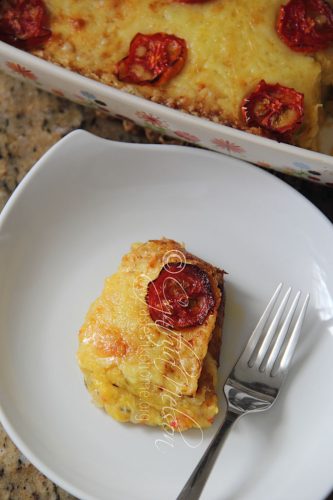 Well, truth be told, it’s oven time all year round in the Caribbean, although I know that many of us took a break from this cooking appliance during the heatwave we experienced for weeks this year. But now, it’s that time of the year that the oven reigns supreme – there are breads, rolls, bakes, cakes, pastries, roasts, tarts, pies, and puddings to make! Are you ready?
Well, truth be told, it’s oven time all year round in the Caribbean, although I know that many of us took a break from this cooking appliance during the heatwave we experienced for weeks this year. But now, it’s that time of the year that the oven reigns supreme – there are breads, rolls, bakes, cakes, pastries, roasts, tarts, pies, and puddings to make! Are you ready?
For newbie bakers and some well-seasoned home cooks, ovens cause stress, they are fraught with risks, too many memories of failed attempts. Let’s arm ourselves with some information that helps us to understand the appliance we are working with and consider how we need to pay attention to the other part of this cooking deal – recipes. Cooking by oven can be liberating, exciting and rewarding.

THE OVEN
Electric versus Gas – This refers to the type of energy used to fuel the appliance. Generally speaking, the difference in the efficiency of the energy is subtle but it can make a difference when it comes to cooking certain foods. Some people argue that heat is distributed more evenly in an electric oven, but others counter that argument by testifying that gas ovens give better control of the exact temperature. And, with the changes in technology, many gas stoves are now able to heat evenly. I have experience using both gas and electric ovens and I have to say that I prefer gas because of the exact temperature it maintains.
Convention versus Convection – The type of oven most of us have in our homes is the convention oven. The main difference between the two types of oven has to do with the circulation of heat. With a convention oven, the circulation of the heat can be uneven; this unevenness occurs when other pans and pots in the oven block the heat. This is very noticeable when you are using the top and bottom racks in your oven, at the same time. You will often find that recipes that require both racks to be used will suggest that you switch pans on the racks halfway through the cooking time; this is to ensure even cooking. The rack that’s at the top is the one that cooks faster because the heat rises to the top and gets trapped there, hence the need to switch because it blocks the bottom pan from cooking evenly.
If you’re only using one rack though, you don’t have to worry about this. Most ovens have four (tiers) in which you can move the racks, the default is usually the second tier (from the bottom) but some recipes will tell you to put the rack in the middle which will then be the third tier (from the bottom). The various rack positions are dictated by what it is that you are cooking and the duration of the cooking. Of course if you have a three (tier) oven, it’s a no-brainer.
A convection oven circulates heat evenly and uniformly in an oven. This even and uniform heat results in faster cooking at a lower temperature. The even heat circulation ensures that the same temperature reaches the top and bottom of foods as well as foods at all rack levels.
Convection ovens are much more expensive and are mostly used in professional kitchens such as restaurants, cooking schools etc. These days, there are home ovens that are coming with the convection option, even toaster ovens.
THE RECIPE
If using a written recipe, I appeal to you – please read the recipe. Don’t glance at it, don’t scan it, read it and understand it. The key to unlocking the mystery of a baked item lies in careful preparation and the ability to grasp the instructions of a recipe.
Oven temperature – Preheating your oven to the range specified in the recipe is very important. When you read “preheat the oven” in a recipe it means that the ingredients need to start cooking as soon as they go into the oven. If you don’t preheat you can get a sunken cake that has not risen, chicken that still looks white and raw even though you’ve had it in the oven for an hour and a half as the recipe instructed. As a guide, your oven should be preheated for at least 20 minutes before use. A lot of ovens these days come with a preheat button, use it and if you like, add on the additional time to bring it up to 20 minutes.
Prepping baking utensils – Before you start mixing your ingredients, prep the pans or dishes they are going to be baked in. A good recipe should instruct you early which size and type of pan or dish to use and also what to line or grease it with.
Assembling ingredients – Assemble your ingredients, measure them as instructed by the recipe and place them in individual little bowls, cups, or plates. This way, when you are ready to put the ingredients together, everything is at hand. This also prevents you from forgetting to add perhaps that all-important baking powder, salt or spice that is required.
And make sure your ingredients are at the temperature prescribed in the recipe. If the recipe says the eggs need to be at room temperature, then they need to be at room temperature. Get them out of the fridge early. Liquids and various fats need to be at certain temperatures when baking to bind ingredients and yield the desired finished texture.
Baking time – Once your pan or dish is in the oven, fight all urges to open the door and peek in. Switch on the oven light if you have to but don’t open the door. If you do, you’d be letting out valuable heat and it can cause a cake, for example, to drop. The recipe gives an idea of the baking time, or it suggests a particular doneness (this is actually a word) you should look for. Use the time as a guide, and my rule of thumb is this – if the recipe says bake for 10 – 15 minutes, I’d check the results at the 10-minute mark, if it looks and tests done, I remove it from the oven, if not I’d extend it by the time suggested by the recipe, in this case 5 minutes. As you become more relaxed and familiar with baking, you will develop your own intuition about whether you should let it bake for the extra 5 minutes or if 3 minutes are good enough.
You can do this! Get baking!
Cynthia










